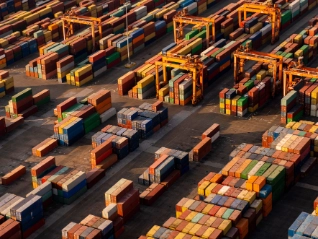
Az alábbi cikkek a legfontosabb gazdasági trendeket tartalmazzák több mint 40 iparágban világszerte. Emellett rendszeresen megkérdezzük ügyfeleinket az ő ügyfeleik fizetési szokásairól. Ezeket, illetve további, iparágat érintő mutatókat – beleértve a nagyobb csődöket – ismerhet itt meg.
Iparági jelentések
Tariffs and growing protectionism could weigh on household spending


Pharmaceuticals businesses throughout the world are reviewing their operational and...

Chemicals production growth projected to slow in 2025/2026 due to US tariffs

In some markets the indirect impact of tariffs could dampen higher food spending

A temporary de-escalation in the US-China tariff dispute will support global electronics growth

Tariffs and related economic uncertainty weigh on commercial construction investment

Challenges currently impacting the global metals and steel industry include oversupply, clean energy transition with the increasing demand for green...
Megjelenítve 7 / 91
The short-term outlook for the euro is uncertain. Three main risk factors are likely to determine the euro’s direction of...


Contractions continue in Europe and the US, but a 2025 rebound is on the cards

The US might impose 25% import tariffs on cars on national security grounds. What is the forecast impact and how is the auto industry...
Fizetési szokások Magyarországon és más országokban
US business response to shifting trade policies


Our survey of companies across Canada, Mexico and the US reveals that while trade credit use is expanding, businesses remain...

Our survey of companies across Bulgaria reveals a risk-averse mood amid widespread concern about the levels of late...

Amid a fragmented B2B customer payment risk landscape, Asia’s corporate sector is concerned about cash flow and profitability, our survey...

Our survey of companies across Hungary reveals a strong focus on safeguarding financial stability and preserving long-term business continuity during...

Our survey of companies across Ireland reveals that underlying pressures on liquidity are prompting a sharp focus on strategic payment risk management

Our survey of companies across Switzerland reveals mood of caution in desire to balance credit support for B2B customers with need to preserve liquidity.
Megjelenítve 7 / 87
Nagyobb csődeljárások
Trade tensions trigger higher insolvencies


Globally, we anticipate a stable insolvency development in 2025, followed by a slight decline in 2026.

Globally, we anticipate a 23% increase in insolvencies in 2024, followed by a slight decline in 2025.
Low- and middle-income countries still face debt problems. Several of them have fallen into default in the past years. Still, restructuring has become increasingly complex.

Post-pandemic adjustments or an adverse new normal?

The increase in insolvencies continues at an accelerated pace in 2023, followed by a more tempered increase in 2024.

Sharp insolvency increases in some major economies in 2023, followed in 2024 by a year of relative stabilisation.
Adapting customer payment risk management strategies to stay financially healthy will be key for businesses...


Atradius' Special Risk Management and Underwriting experts have updated their Insolvency Framework whitepaper, focusing now on 39 of the world's key markets.




































